Welcome to animals that start with O.
Many animals begin with O. Here we list some you know and some you will soon discover. Let’s dive right in.
Read the entire article or jump to any section below:
Overview of Animals That Start With O
1. Ocelot

| Scientific Name | Leopardus pardalis |
| Where it Lives | Central and South America |
| What it Eats | Rodents, opossums, fish, birds |
| Conservation Status | Least concern |
Fun fact: In the 1960s and 70s, ocelots were severely exploited due to the fur trade. Subsequent bans on this trade resulted in their populations rising once again.
Ocelots are also known as painted leopards. They are medium-sized wild cats that weigh on average 15-34 lb (7-15 kg). These carnivores prefer hunting at night in areas with dense vegetation cover. They are excellent at following scent trails and stalking their prey.
2. Octopus
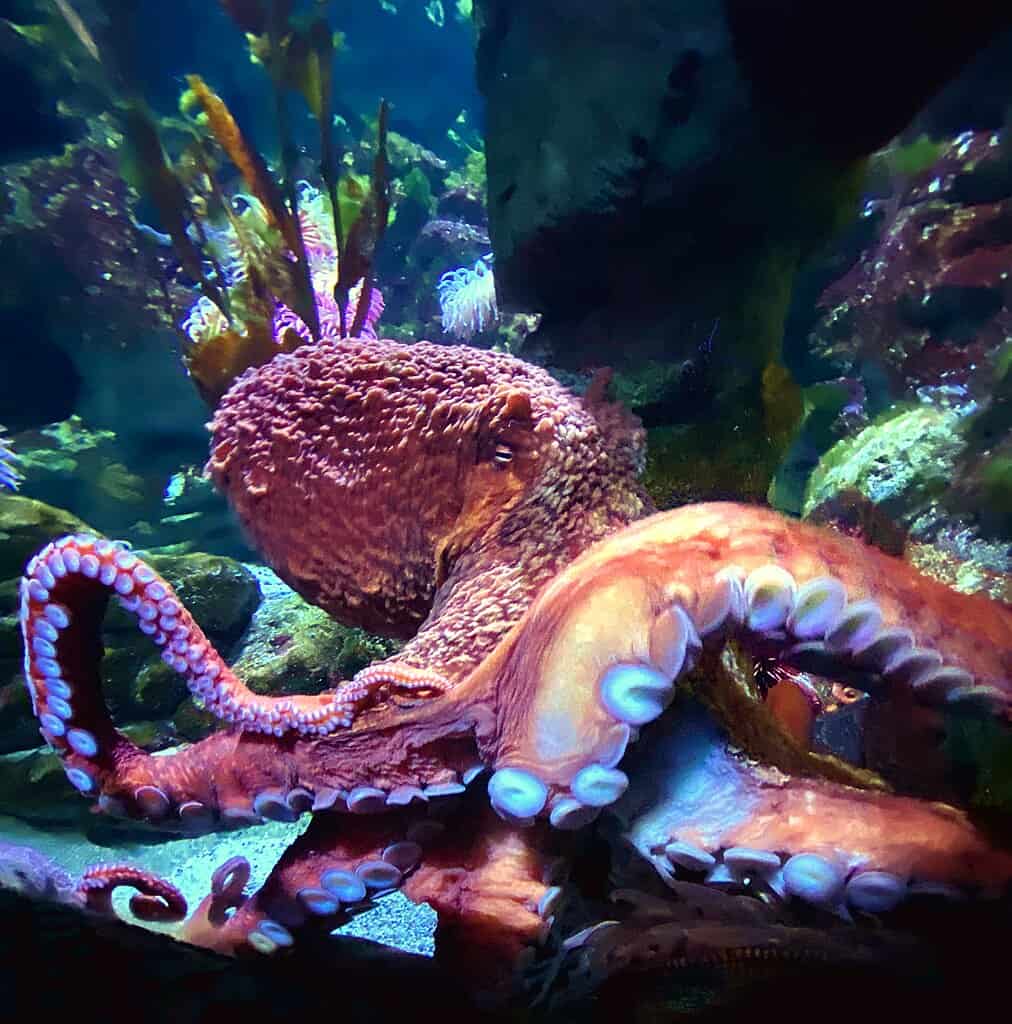
| Scientific Name | Octopus spp. |
| Where it Lives | Coastal marine waters |
| What it Eats | Crabs, clams, fish |
| Conservation Status | Least concern, 3 species endangered |
Fun Fact: They are so flexible that they can pass through holes with a diameter of 1 inch.
Octopi are invertebrates including about 300 species worldwide. They prefer temperate and tropical regions and typically stay on the ocean floor in shallow waters. Octopi are highly intelligent and solitary animals. When they feel threatened, they can shoot an ink fluid to darken the water and escape.
3. Oilbird
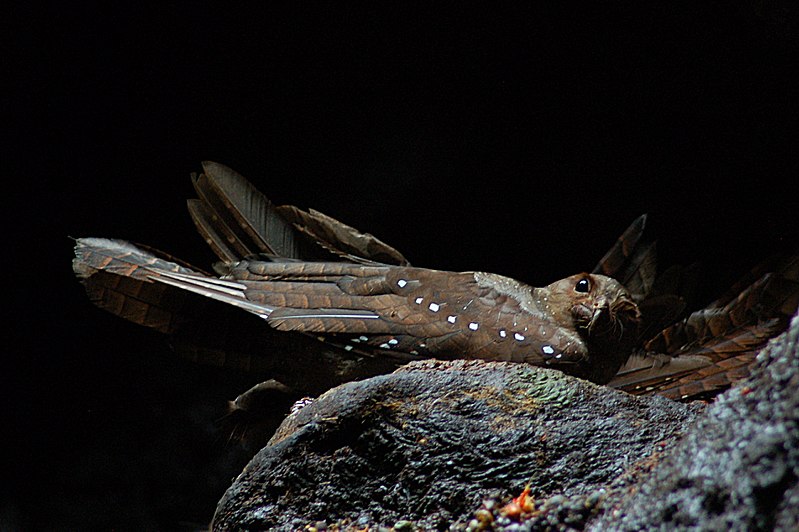
| Scientific Name | Steatornis caripensis |
| Where it Lives | Northern South America |
| What it Eats | Fruits, nuts, seeds |
| Conservation Status | Least concern |
Fun Fact: They consume a high-fat diet, and so, at one time in history, native South Americans consumed them for energy and used their excess fat as lamp oil.
Oilbirds are nocturnal birds located in the Northern areas of South America. They feed primarily on oil palm fruits and tropical laurels and reside in caves. They navigate using echolocation in the same way that bats do, and they are one of the few species of birds who do so. Their conservation status is currently of “least concern,” but their population numbers are decreasing due to habitat destruction.
4. Okapi

| Scientific Name | Okapia johnstoni |
| Where it Lives | Central Africa |
| What it Eats | Grasses, branches, fungi |
| Conservation Status | Endangered |
Fun fact: They also feed on reddish clay when their food supply is scarce.
Okapis are herbivores endemic to the Democratic Republic of Congo. Their most distinctive feature is the white and black stripes on their limbs. Although their stripes may be reminiscent of zebras, they are more closely related to giraffes. In fact, they have been nicknamed the zebra giraffe. Their populations are threatened due to illegal mining activities in their habitat and hunting.
5. Old English Sheepdog
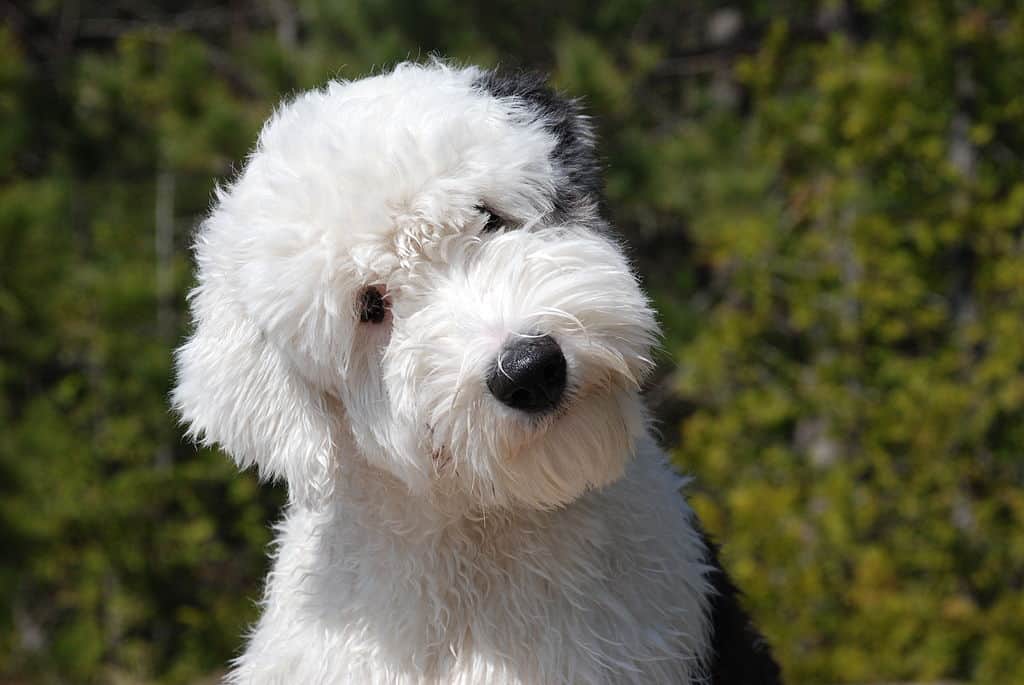
| Scientific Name | Canis lupus familiaris |
| Where it Lives | Worldwide |
| What it Eats | Kibble, meat |
| Conservation Status | Least concern |
Fun Fact: They were bred in the 19th century in southeast England. Hence their name, Old English.
Old English Sheepdogs are a social dog breed. They have long and thick fur that often conceals their eyes, and they are white with grey patches. Their fur does not shed, except when brushed. They are intelligent and very playful pets. These dogs weigh an average of 60-100 lb (30-45 kg).
6. Olive baboon

| Scientific Name | Papio anubis |
| Where it Lives | Equatorial Africa |
| What it Eats | Variety of plants, invertebrates, birds |
| Conservation Status | Least concern |
Fun fact: Olive baboon males will fight for a higher-ranking position, but the decision-making within a group appears to be democratic.
Olive baboons are native to 25 countries in Africa. They live in a wide range of habitats, including grasslands, rainforests, and deserts. These baboons have greyish-brown fur, and a male adult can weigh up to 110 lb (50 kg). They are omnivores and consume a wide variety of food, which is also one of the reasons they so successfully live in many habitats. Furthermore, they have a complex social structure within groups.
7. Olm

| Scientific Name | Proteus anguinus |
| Where it Lives | Central and southeastern Europe |
| What it Eats | Shrimp, snails, insects, larvae |
| Conservation Status | Vulnerable |
Fun Fact: Olms can live for six years without feeding by slowing down their metabolisms.
Olms, otherwise known as cave salamanders or human fish, are vertebrates that live their whole lives in caves. They feed on insects that complete their life cycle in water bodies. They are white or pink in their natural habitat, but they become darker when exposed to light.
8. Opossum
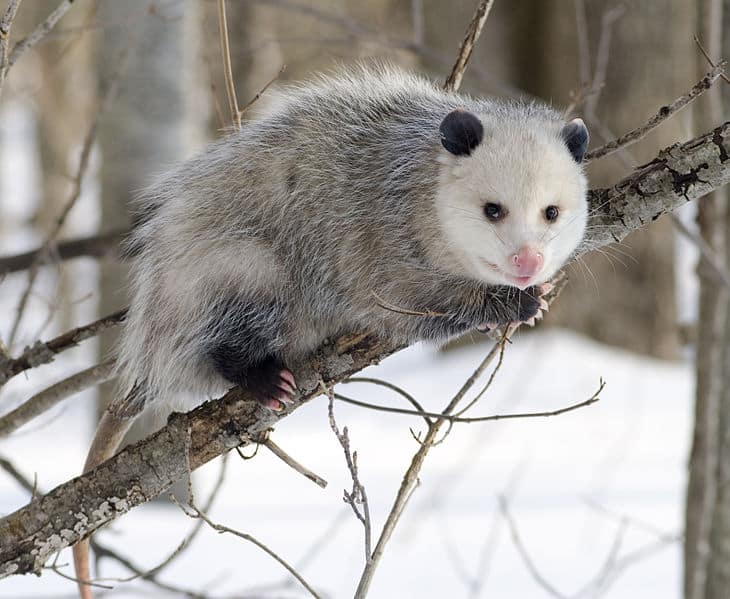
| Scientific Name | Didelphis spp. |
| Where it Lives | Central and North America |
| What it Eats | Rodents, birds, eggs, fruit |
| Conservation Status | Least concern |
Fun Fact: Most opossum species are immune to snake venom.
Opossums are marsupials that live in areas like forests and farmland close to rivers. They have excellent balance and are good at climbing trees. Furthermore, like other marsupials, adult opossums have pouches where their babies are kept until they mature. Opossums are commonly called “possums” in North America, but these are different animals from Australasian possums.
9. Orangutan
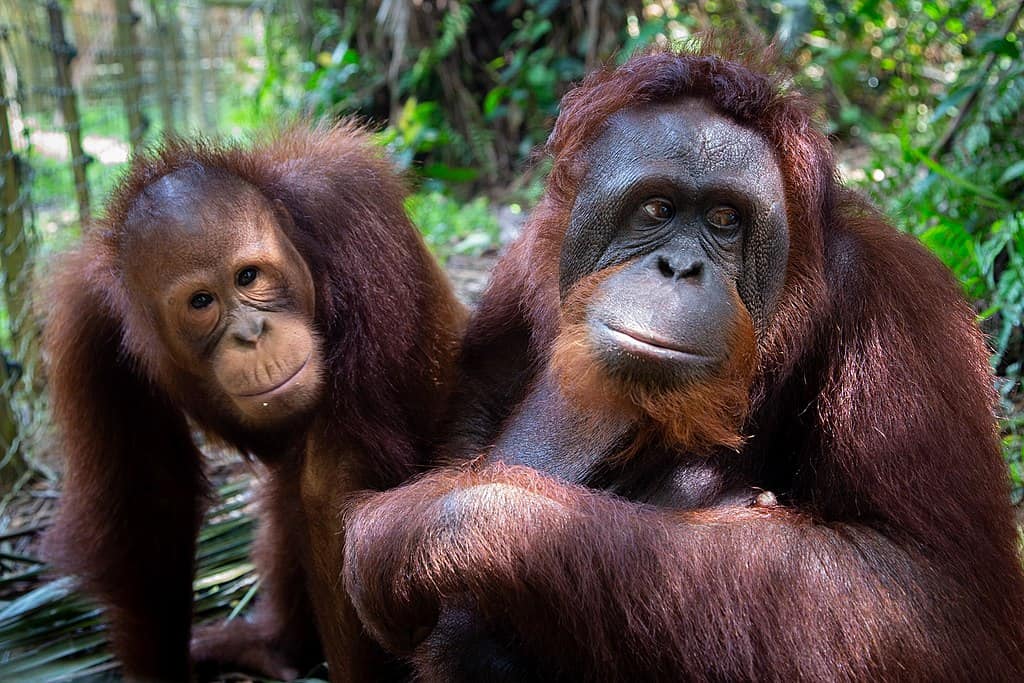
| Scientific Name | Pongo spp. |
| Where it Lives | Southeast China |
| What it Eats | Fruit, bark, honey, insects |
| Conservation Status | Critically endangered |
Fun fact: They share about 97% of their DNA with humans!
Orangutans are endangered species that spend most of their time on trees. Deforestation and poaching are two of the greatest contributing factors to orangutan endangerment. They are one of the largest primates in size globally and have an omnivorous diet, although they primarily eat fruit.
10. Orb Weaver

| Scientific Name | 186 genera, 3108 species |
| Where it Lives | Worldwide |
| What it Eats | Insects |
| Conservation Status | Least concern |
Fun Fact: There is evidence to suggest that orb weavers may have existed as far back as the Cretaceous period (145-66 million years ago).
Orb weavers include over 3,000 different species of spiders. These spiders are characterized by often colorful (sometimes brown), large abdomens, and have skull-like heads. Most species spin spiral-shaped webs to prey such as mosquitoes, gnats, flies, grasshoppers, and moths. Some species will even spin a new web every single day. They pose no threat to humans or pets.
11. Orca
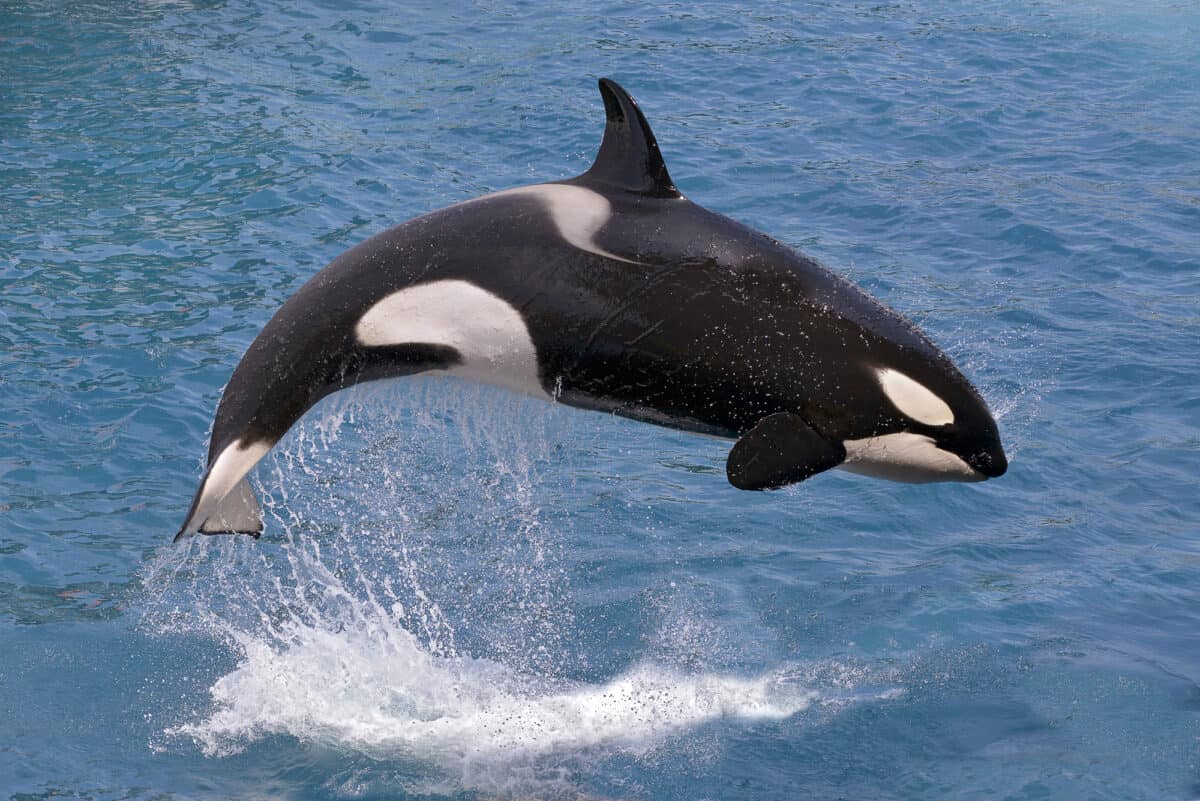
| Scientific Name | Orcinus orca |
| Where it Lives | Oceans worldwide |
| What it Eats | Fish, seabirds, squid |
| Conservation Status | Data deficient |
Fun Fact: The killer whales also prey on the blue whales.
Orcas, otherwise known as killer whales, are found in oceans all over the world. They are predators with sharp teeth, unlike the brush-like teeth that whales have, tearing and chewing prey. Orcas were previously classified as “endangered,” but this was changed to “data deficient” until all specific species of orcas were individually classified by the IUCN.
12. Ornate Hawk-Eagle
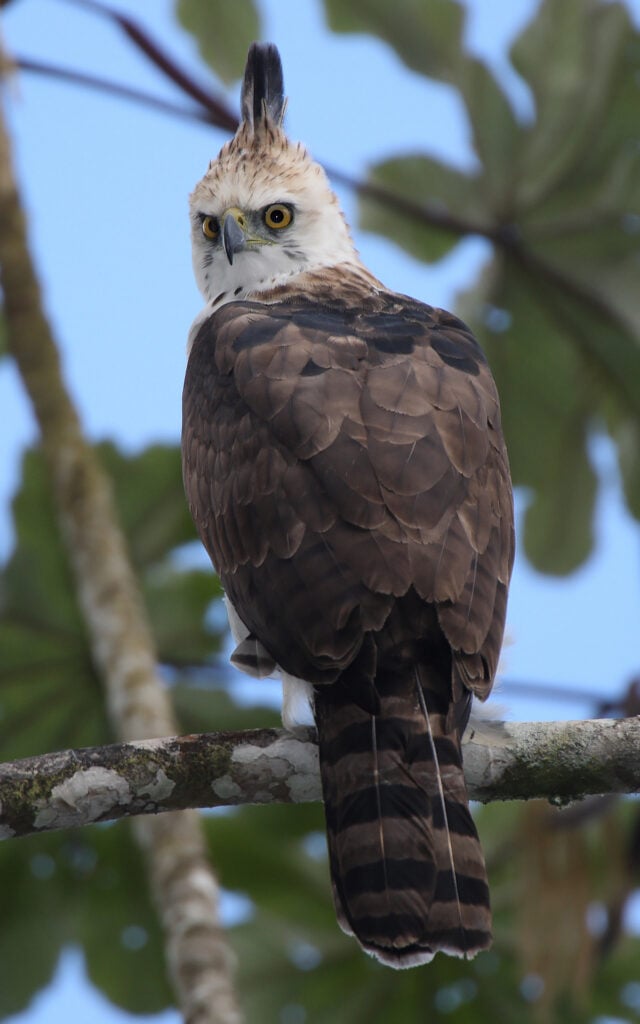
| Scientific Name | Spizaetus ornatus |
| Where it Lives | Central America and northern South America |
| What it Eats | Birds, mammals |
| Conservation Status | Near threatened |
Fun Fact: Ornate Hawk-eagles also prey on bigger birds than them.
Ornate Hawk-Eagles are identifiable by the large crest of feathers on their heads. They live throughout tropical America but can be found mainly in Brazil. They are often seen perching quietly and elegantly on trees when hunting for prey.
13. Oryx

| Scientific Name | Antilope oryx |
| Where it Lives | Arabia, north and east Africa |
| What it Eats | Grasses, thorny shrubs |
| Conservation Status | Least concern |
Fun Fact: Oryxes thrive in near-desert conditions and can survive without water for long periods.
Oryxes look like antelopes but have straight horns and markings on their limbs and faces. Their main predators are big cats, like lions and cheetahs, and humans. A subspecies of oryx, known as gemsbok, is the national animal of Namibia.
14. Oscar fish
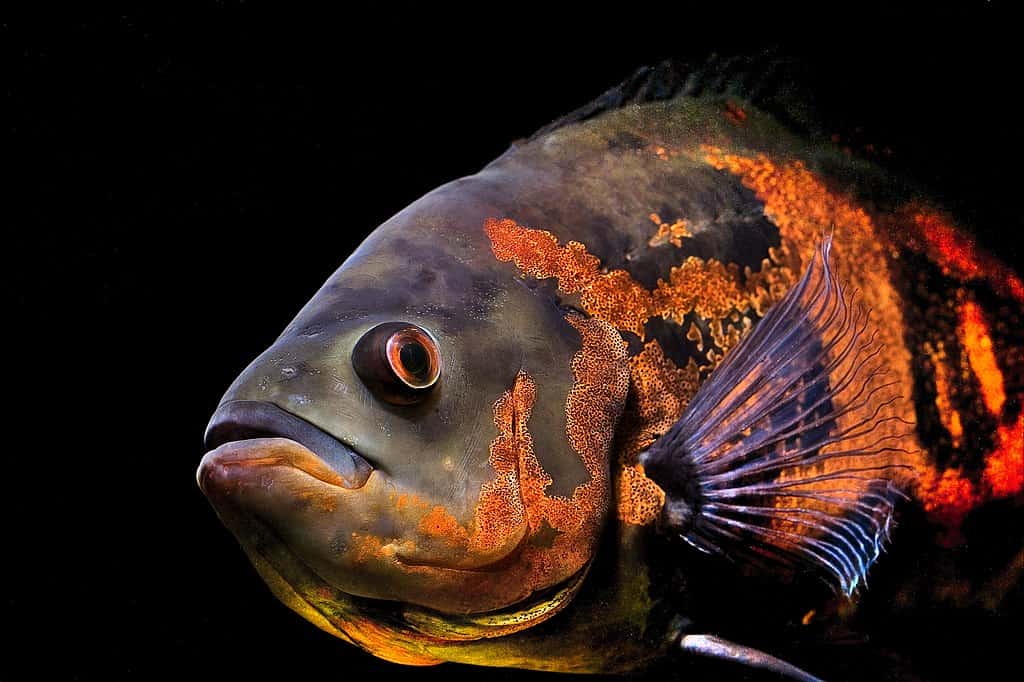
| Scientific Name | Astronotus ocellatus |
| Where it Lives | Tropical South America |
| What it Eats | Catfish, shrimp, insects, fruits |
| Conservation Status | Least concern |
Fun Fact: Oscar fish have teeth in their throat.
Oscar fishes have a life span of 20 years. They can lay between 300–3000 eggs at one time, and the offspring is born a different color from its parents. Oscar fishes are omnivores, and they have a special suction mechanism that they use to catch prey in the water. Water that is colder than 55 °F (12 °C) is lethal to these fish.
15. Osprey
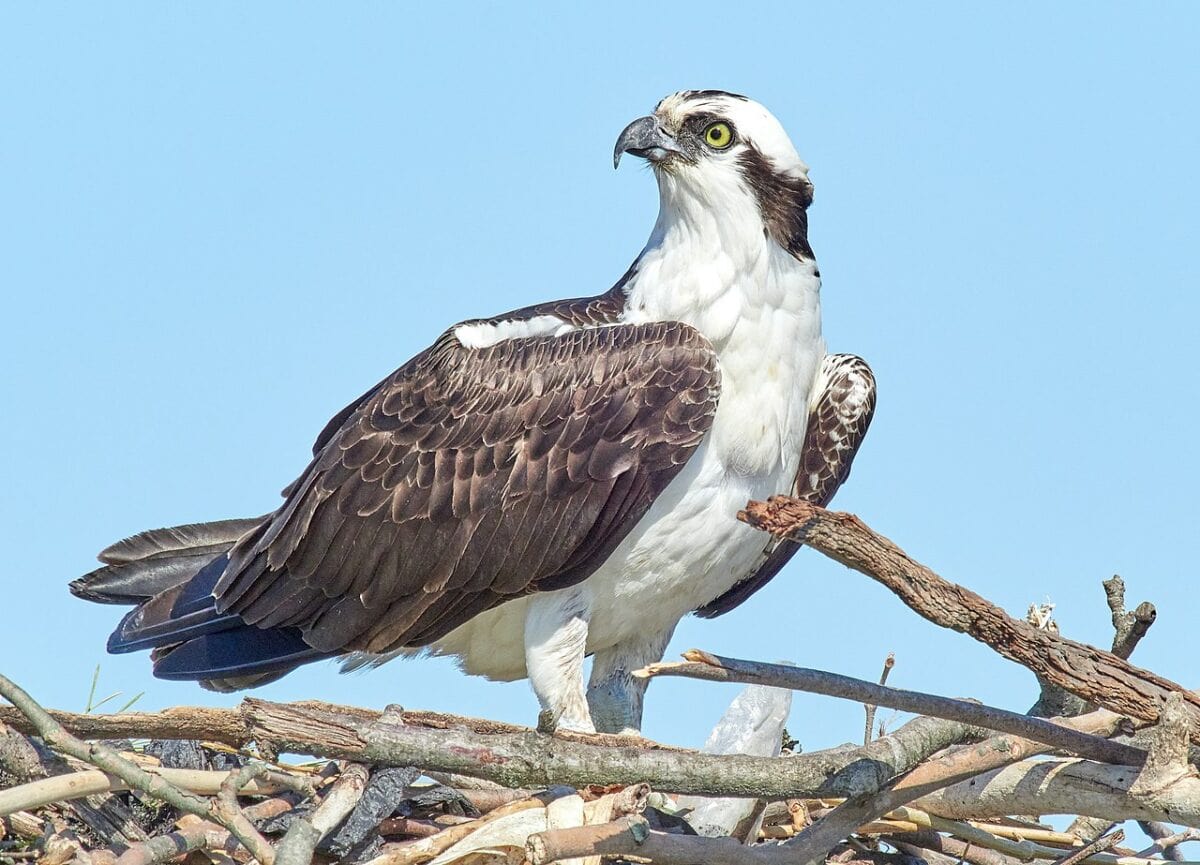
| Scientific Name | Pandion haliaetus |
| Where it Lives | All continents except Antarctica |
| What it Eats | Fish, rodents, frogs |
| Conservation Status | Least concern |
Fun Fact: Ospreys have a wingspan of about 5 feet.
Ospreys, otherwise known as fish hawks, have white bodies, black wings, and a black mask around their eyes. They are the second most widely distributed raptor bird, after peregrine falcons, and are a migrant species. Fish make up around 99% of their diet, but ospreys will also consume small land animals.
16. Ostrich

| Scientific Name | Struthio camelus |
| Where it Lives | Sub-Saharan Africa, Horn of Africa |
| What it Eats | Leaves, grasses, succulents |
| Conservation Status | Least concern |
Fun fact: These creatures have only two toes.
Ostriches are one of the largest land animals on the earth, and they are the largest bird species. They cannot fly and instead use their wings to balance and for courtship. Ostriches are primarily found in Africa, but they are bred and farmed in many parts of the world.
17. Otter
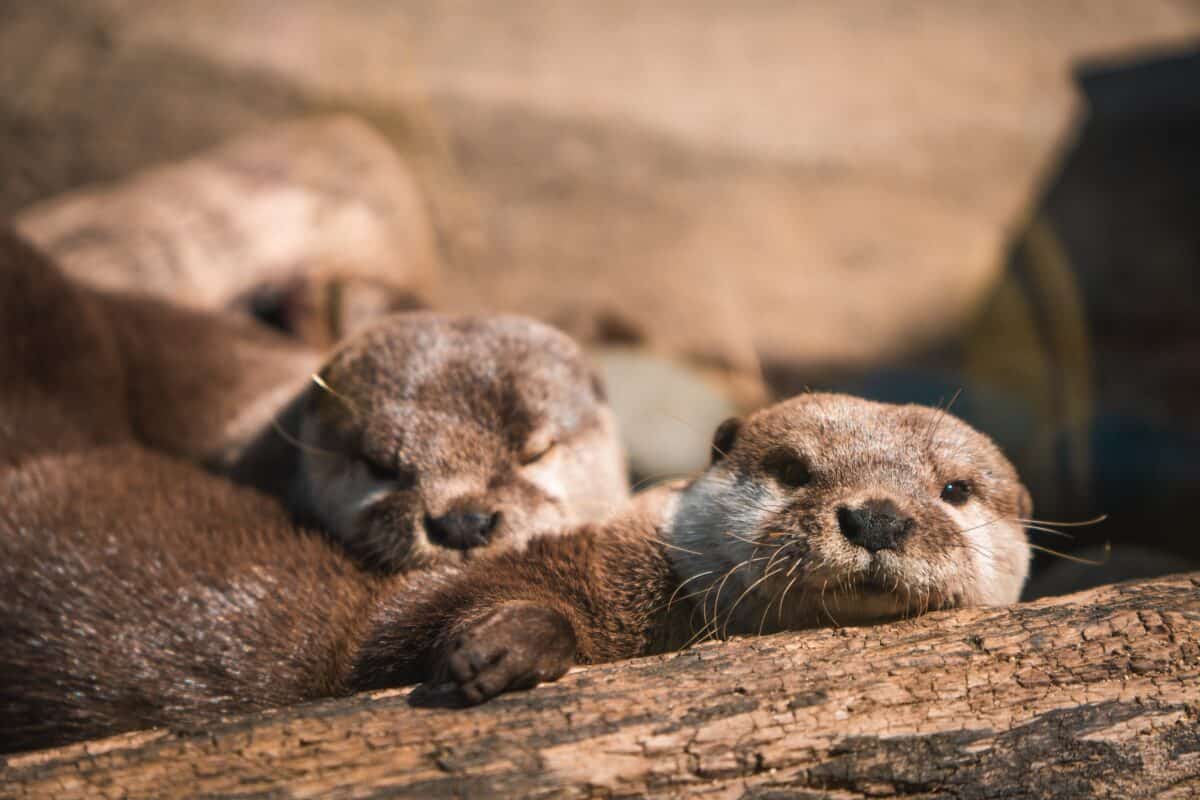
| Scientific Name | Lutra spp. |
| Where it Lives | North America, Europe, Asia |
| What it Eats | Fish |
| Conservation Status | Several species endangered |
Fun Fact: The word “otter” comes from the same root word as “water.”
Otters are water-loving carnivorous mammals. There are 13 different species of otter around the world, most of which live in the northern hemisphere. River otters make up 11 species, and the other two species are sea and marine otters. They have thick fur, which allows them to float on the water surface. They have many different vocalizations including chirping, squeaking, and growling.
18. Ox
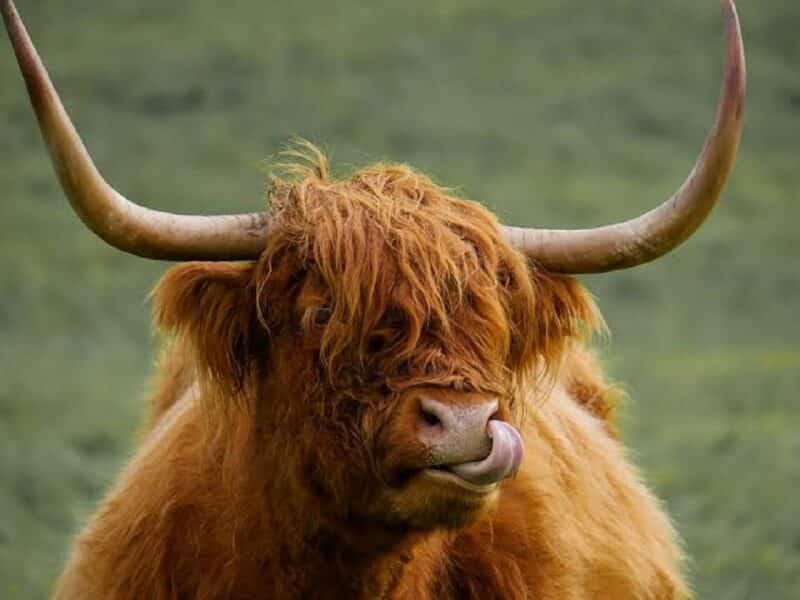
| Scientific Name | Bos taurus |
| Where it Lives | Worldwide |
| What it Eats | Hay, grass, grain |
| Conservation Status | Least concern |
Fun Fact: These creatures have been of assistance to man since around 4,000 BC.
Oxen are cattle also known as bullocks. These herbivores have been put to work for thousands of years, helping with plowing fields, transport, and carrying loads. Working oxen are often given shoes similar to horseshoes. In the wild, they travel in herds, and their predators include bears and wolves.
19. Owl
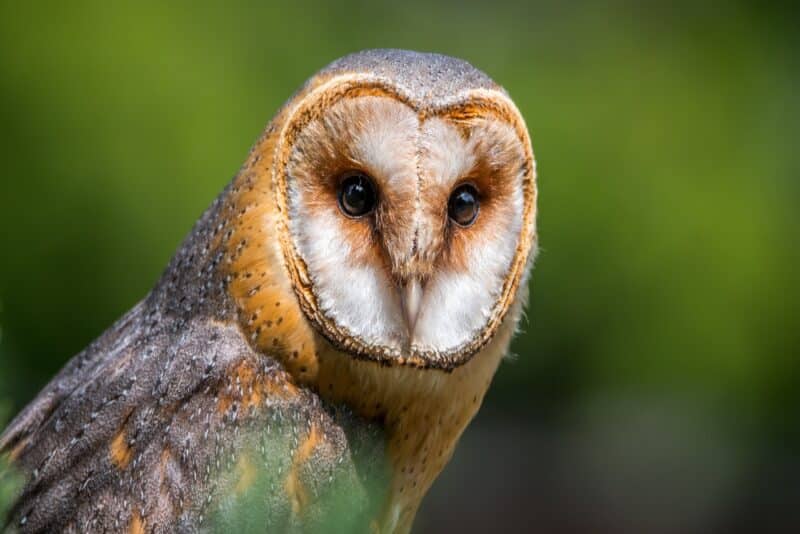
| Scientific Name | 20 genera |
| Where it Lives | Worldwide |
| What it Eats | Small mammals, insects, birds |
| Conservation Status | Some species endangered |
Fun Fact: Owls can rotate their necks about 270 degrees around.
Owls are very recognizable birds with their large bodies, impressive wingspans, flat faces, bulging eyes, and protruding beaks. They are far-sighted and most of them are nocturnal. Symbolically, seeing an owl during the day counts as a bad omen. They are excellent hunters and prey on small nocturnal animals.
20. Oyster
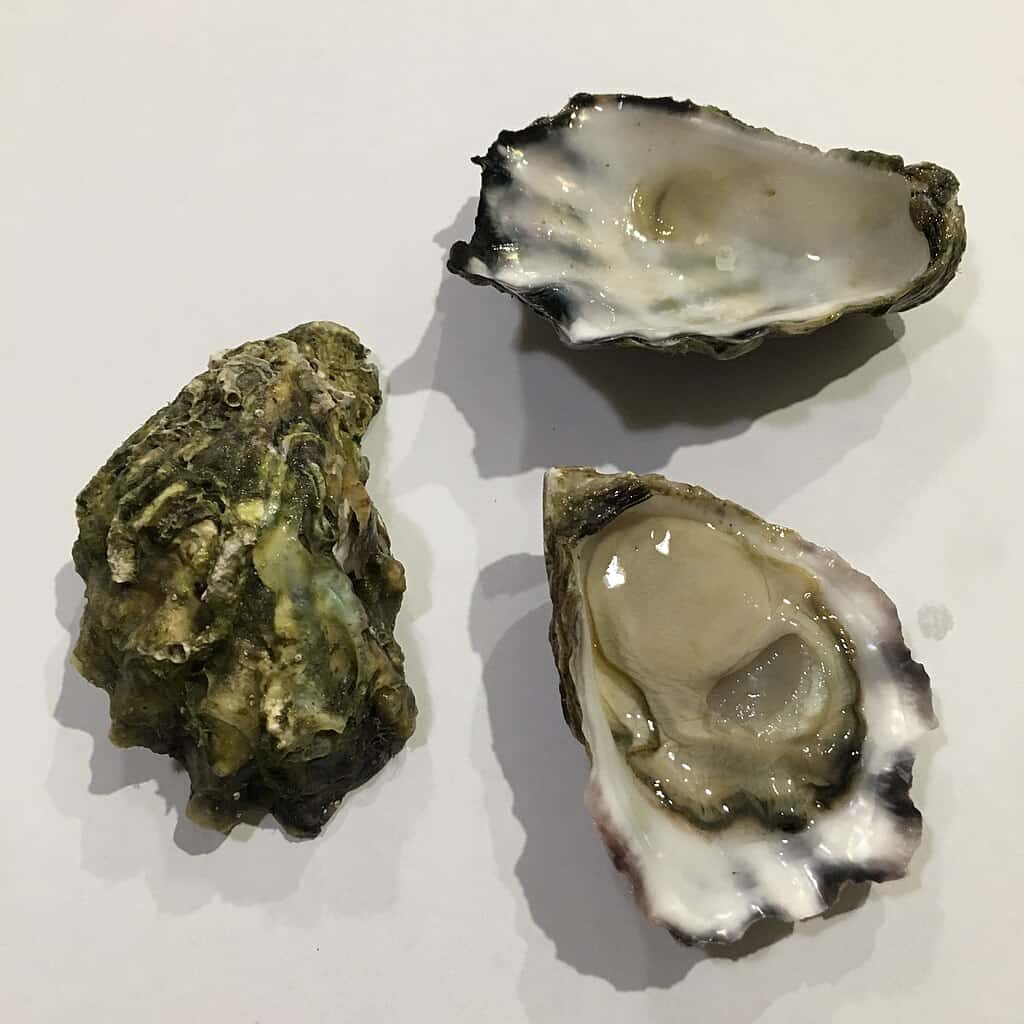
| Scientific Name | Ostreidae spp. |
| Where it Lives | Salty or brackish coastal waters |
| What it Eats | Phytoplankton, algae |
| Conservation Status | Critically endangered |
Fun Fact: Some species have eyes all over their bodies.
Oysters are irregularly shaped marine creatures. They are greyish-white in color and live in oval shells in coastal waters. Oysters are highly proteinous and serve as a main source of nutrients for many animals. The main predators of oysters are seabirds, crabs, and even humans.
An oyster forms a pearl as a defense mechanism against foreign substances. When an irritant enters the oyster’s shell, it secretes a substance called nacre around the irritant, which gradually builds up to form a pearl. This process naturally protects the oyster’s delicate internal tissues.
Summary of Animals that Start with O
We hope you had an educative time. Why not head over to this other animal list that starts with H before you go? It’ll be worth it, we promise. See you next time.
Thank you for reading about animals that start with o. Get the full Animal Alphabet here:
- Animals That Start With A
- Animals That Start With B
- Animals That Start With C
- Animals That Start With D
- Animals That Start With E
- Animals That Start With F
- Animals That Start With G
- Animals That Start With H
- Animals That Start With I
- Animals That Start With J
- Animals That Start With K
- Animals That Start With L
- Animals That Start With M
- Animals That Start With N
- Animals That Start With P
- Animals That Start With Q
- Animals That Start With R
- Animals That Start With S
- Animals That Start With T
- Animals That Start With U
- Animals That Start With V
- Animals That Start With W
- Animals That Start With X
- Animals That Start With Y
- Animals That Start With Z
Thank you for reading!
Join our Forum for free today!

- These are The 5 Largest Great White Sharks Ever Recorded - July 19, 2024
- The Surprising Benefits of Big Game Hunting - July 18, 2024
- $100k+ Hunting Experiences The Most Expensive Animals to Pursue - July 17, 2024


